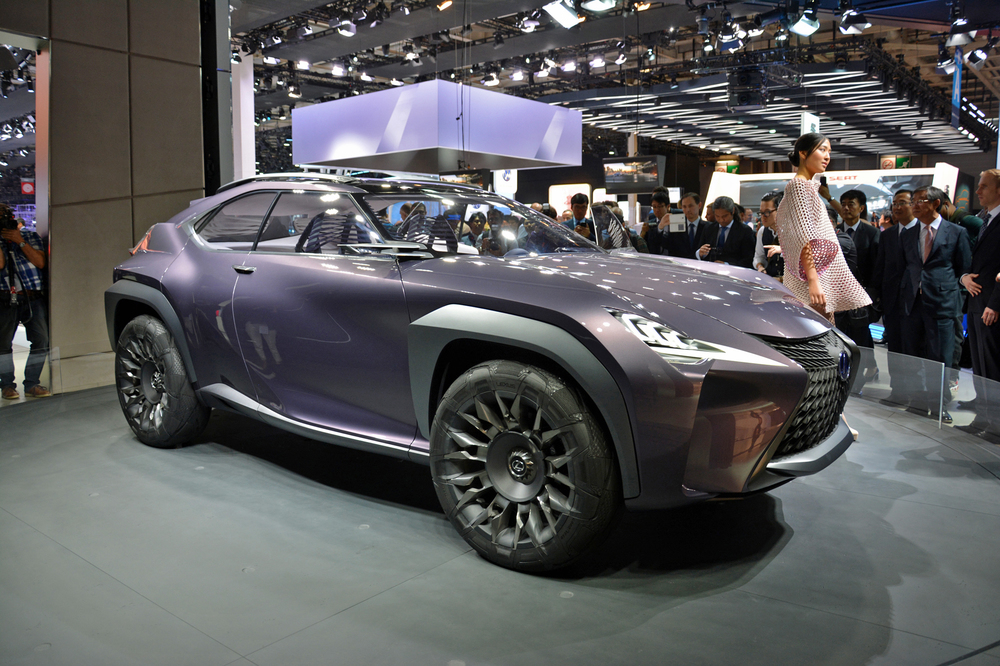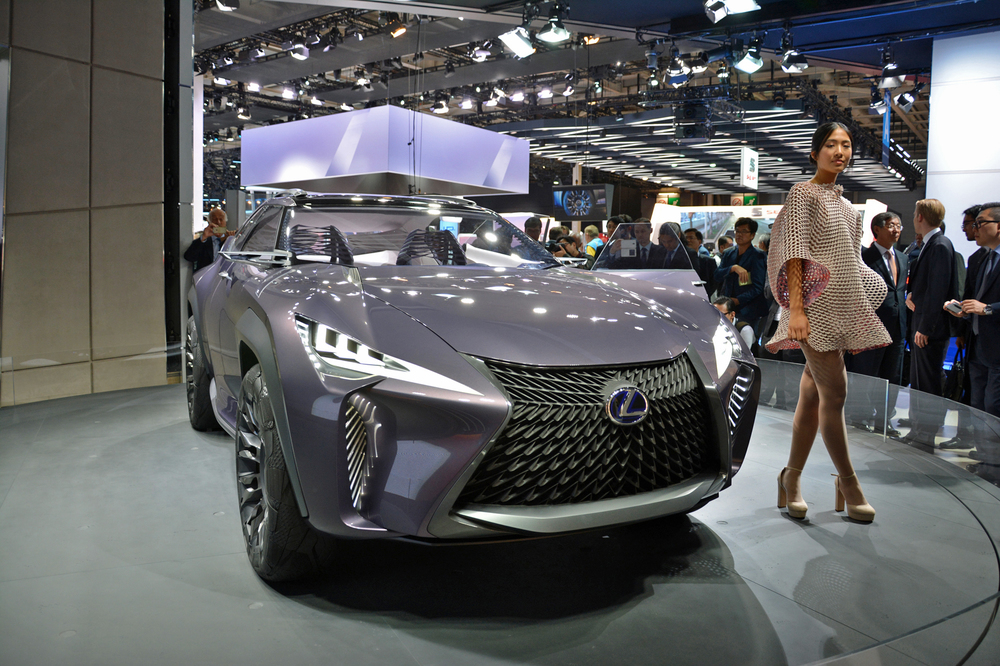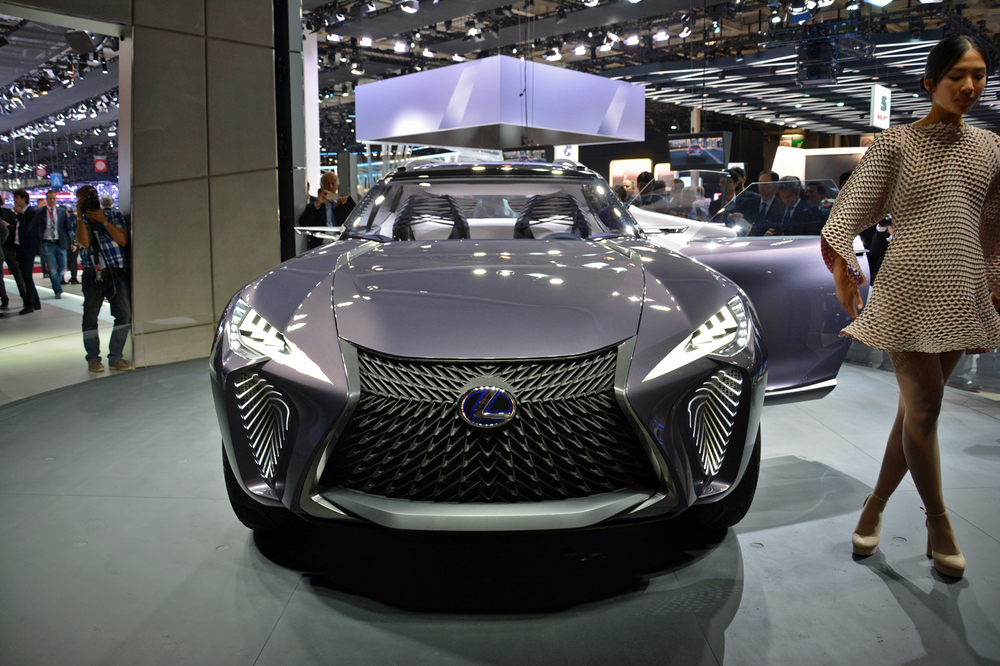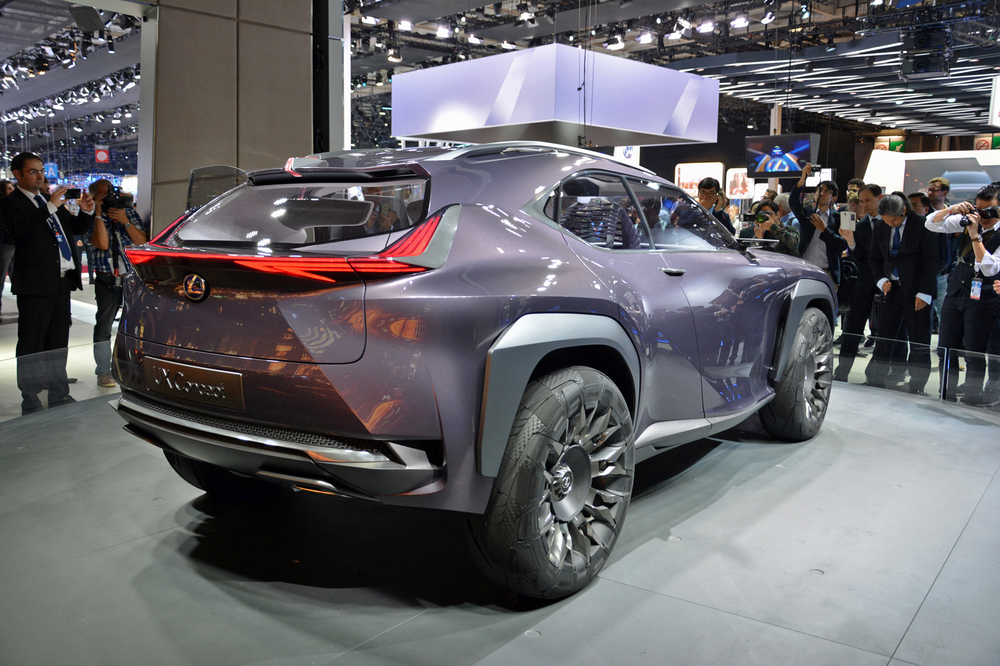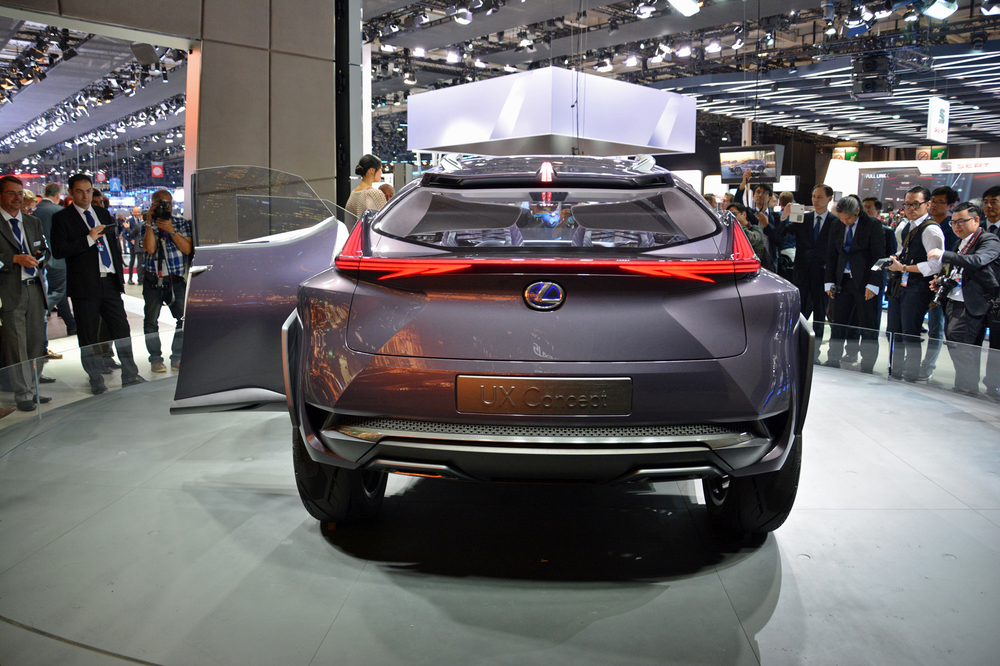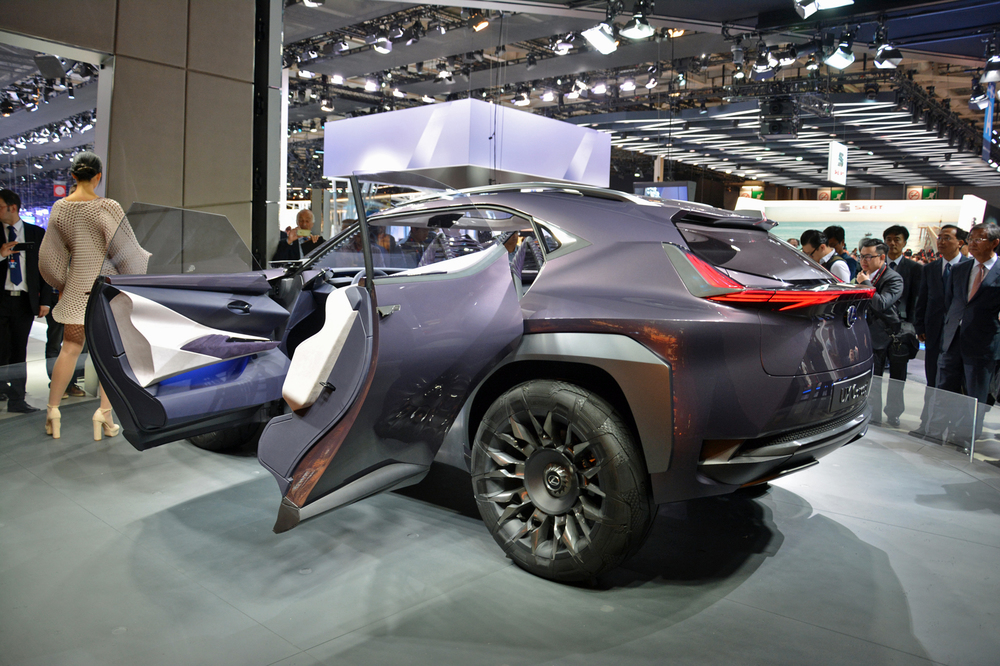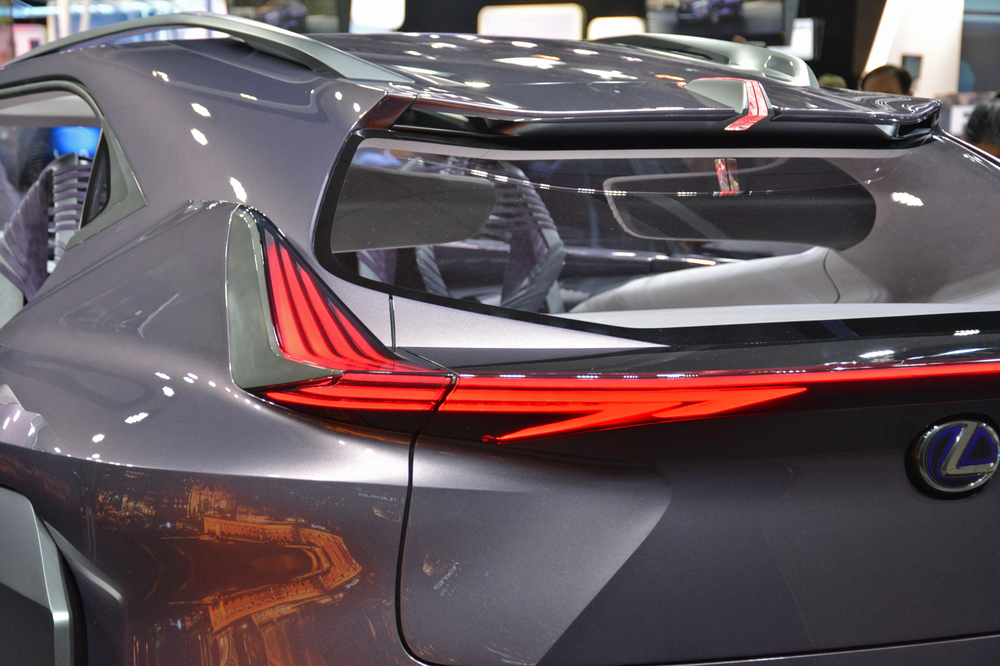The current popularity of SUVs was certainly reflected at the 2016 Paris Motor Show, with numerous concept and production models on display. Among them was the heavily teased Lexus UX concept, which previews a possible smaller SUV from the Toyota luxury brand.
Lexus’ design language seems to get more extreme with each new car. Like the larger NX and RX SUVs, the UX’s body is a riot of sharply creased surfaces, with the automaker’s signature “spindle grille” up front. The UX adapts these elements to a smaller platform, and takes things a bit further with boxy wheel arches and front fenders with pronounced peaks.
Cameras take the place of exterior mirrors, something many carmakers are interested in because of potential aerodynamic benefits. The UX also features a see-through A-pillar, made of polycarbonate pieces attached to an aluminum spine. That should noticeably improve visibility, as the thick A-pillars in modern cars can be a significant impediment.
On the inside, the UX debuts Lexus’ Kinetic Seat Concept. The seats move in response to the occupant’s weight and external forces caused by vehicle motion, which Lexus says helps to stabilize the body and increase comfort. The flexible netting that takes the place of regular upholstery allows the seats to do that.
Read more: Audi RS 3 sedan debuts in Paris with 400 hp
In addition to fancy seats, the rest of the UX interior resembles the bridge of an alien spaceship. Instead of a conventional gauge cluster, the driver gets a transparent globe that houses both analog and digital displays, while what Lexus describes as a “faceted crystal structure” on the center console projects “hologram-style” displays for infotainment and climate control.
What Lexus didn’t mention were any powertrain details. While it looks like it could be powered by the dilithium crystals that powered the Enterprise in Star Trek, any production version would likely share a platform and powertrains with the Toyota C-HR, a subcompact crossover that will go on sale in the U.S. in the spring as a 2018 model. A production version of the UX could arrive sometime after that.
